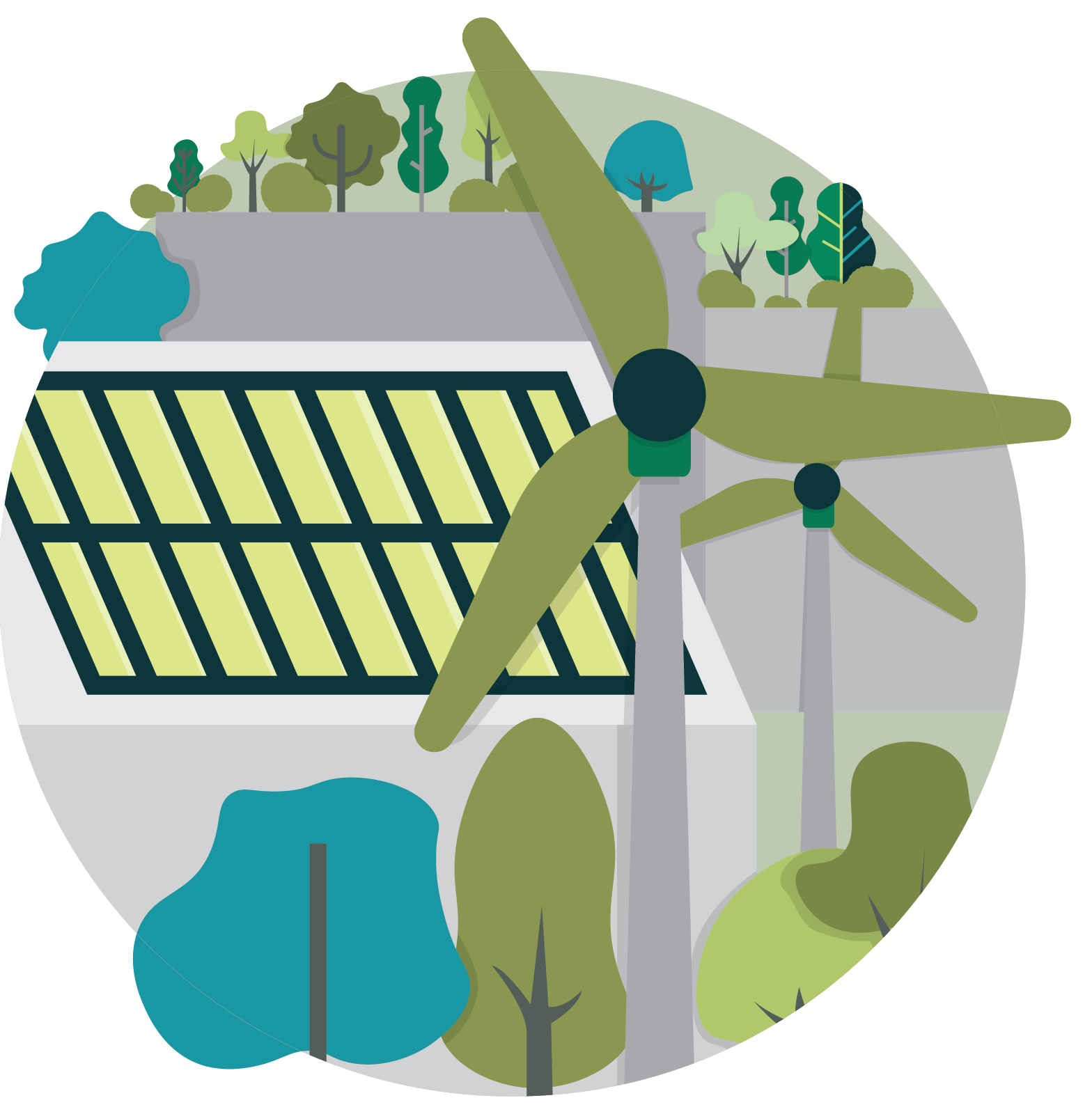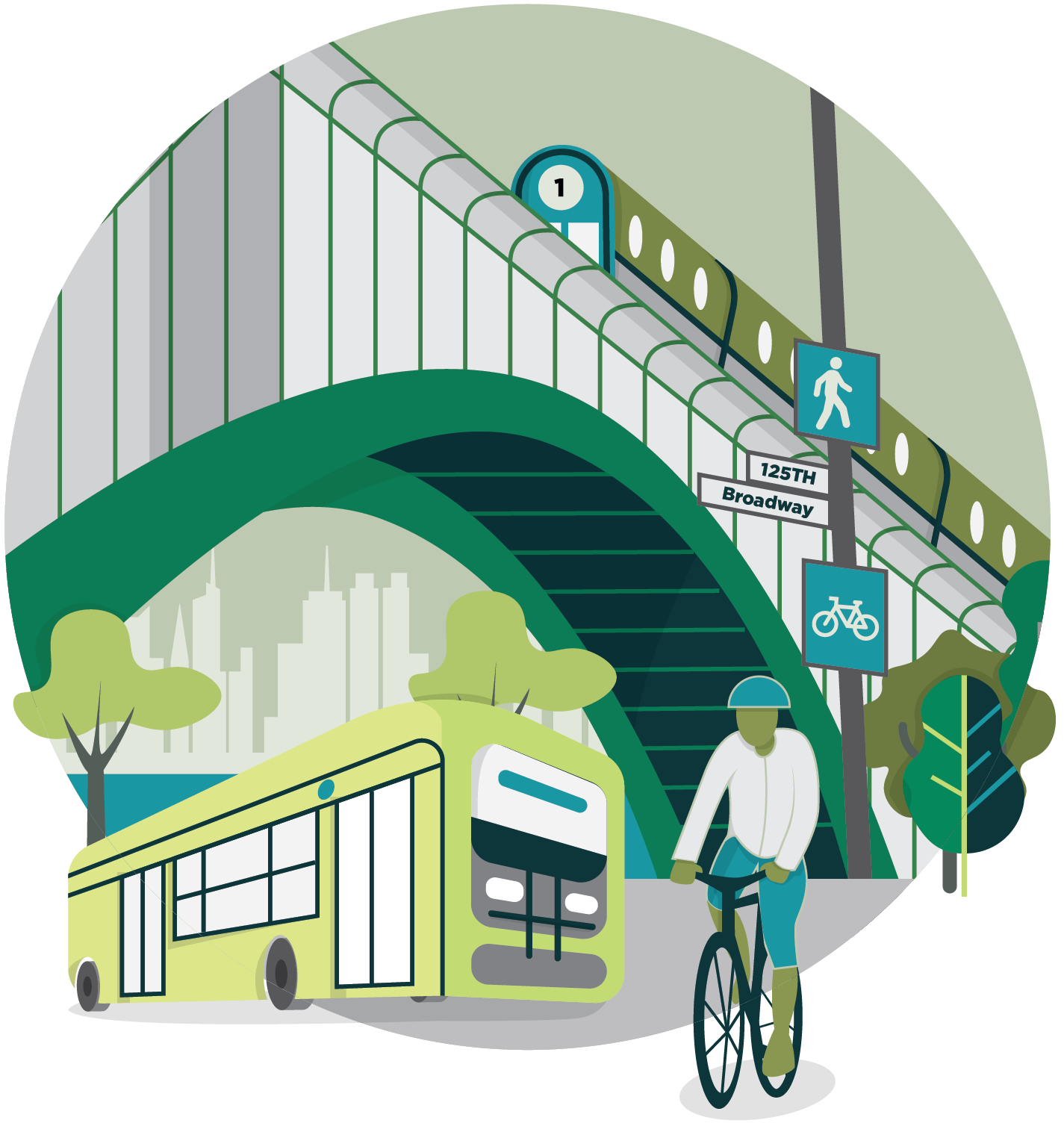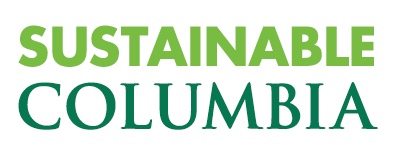Plan 2030: Executive Summary
Plan 2030: A ten-year sustainability plan for Columbia University
Plan 2030 is a ten-year strategic plan that outlines aggressive sustainability goals, grounded in climate science, for Columbia’s New York campuses to achieve net zero emissions by 2050. Building on the goals achieved in its first sustainability plan, Columbia has developed this plan in conjunction with its own Earth Institute scientists and faculty, using guidance from the Science Based Target initiative (SBTi) and the United Nations Environment Programme (UNEP) to establish principles and measurable targets that will help ensure Columbia will achieve this goal. Achieving these targets requires an increased commitment across all areas of the University, and the ability to model sustainable values within every part of its culture — the way it educates, operates, designs, constructs, and manages resources.
The University has made unprecedented commitments to address climate, most notably establishing a Climate School, committing to carbon neutrality, and establishing a non-investment policy in gas, oil, and coal companies. With Plan 2030, Columbia University now joins the global movement of leading organizations by aligning “with the most ambitious aim of the Paris Agreement, to limit global temperature rise to 1.5°C above pre-industrial levels and reach net zero by 2050 for the best chance of avoiding the worst impacts of climate change.” Source.
One unifying goal for Columbia campuses: net zero emissions by 2050
Plan 2030 unifies goals, progress, and action for Morningside, Manhattanville, Columbia University Irving Medical Center (CUIMC), and Lamont-Doherty Earth Observatory (LDEO), in one overarching goal: reach net zero emissions by 2050 with interim science-based targets.
Net zero emissions includes tracking, reporting, and actively working to reduce:
- All internationally recognized greenhouse gases (GHGs) regulated under the Kyoto Protocol (CO2, CH4, N2O, HFC, PFC, SF6, NF3) included within Columbia’s reporting boundary to The Climate Registry (TCR).
- All material Scope 1, Scope 2, and Scope 3 sources within Columbia’s value chain.
Science-based targets to achieve 2050 goal
Science-based targets (SBT) are defined as measurable emissions reduction targets that are in line with what the latest climate science says is necessary to meet the goals of the Paris Agreement – to limit global warming to well below 2°C above pre-industrial levels and pursue efforts to limit warming to 1.5°C.
Plan 2030 establishes principles that serve as the foundation for ambitious science-based GHG emission reduction targets. The Trajectory to Net Zero Emissions section translates these principles into three types of measurable targets: the latest date by which Columbia will achieve net zero emissions, a maximum cumulative emissions budget within the time net zero emissions state is achieved, and significant reductions in annual absolute emissions along the trajectory to net zero.
To identify these principles and targets, Columbia has relied on information available from SBTi, the Intergovernmental Panel on Climate Change (IPCC), and UNEP, and has consulted with key scientists and faculty members at the Earth Institute.
SBT calculated from the base year of 2019 align all campuses at the highest level.
For Scope 1, Scope 2, and Scope 3 emissions sources for which Columbia has a complete accounting as of 2019:
Cumulative emissions shall not exceed the following multiples of 2019 reported emissions:
- 9.6 through 2030
- 14.0 until achieving a state of net zero emissions (not later than 2050)
Annual reduction in absolute emissions expressed as a percent of 2019 emissions:
- 2025 target: 15%
- 2030 target: 42%
- 2035 target: 63%
- 2050 target: 100%; net zero emission goal achieved.
Columbia will complete an accounting of all remaining GHG emissions sources within its value chain by the end of 2022 and set associated targets consistent with the SBT principles adopted in this plan.
Campus-specific 2030 goals for absolute GHG reduction
To this point, CUIMC and LDEO have prepared separate GHG inventories from Morningside, which has included the Baker Athletic Complex, Manhattanville, and Nevis campuses within its inventory boundary (the “Morningside+” (MS+) inventory). To ensure consistency in tracking the considerable progress made to date, each of the three reporting groups (LDEO, CUIMC and MS+) will build on past GHG reduction progress and track performance against their initial base years as well as against 2019. The following are the corresponding targets for percent reduction in absolute emissions that will be publicly reported and tracked in each annual report relative to the initial base years.
- Morningside+: 66% reduction from 2006 base year by 2030
- CUIMC: 66% reduction from 2012 base year by 2030
- LDEO: 72% reduction from 2016 base year by 2030
Plan 2030: commitment areas to achieve targets
To achieve the targets outlined in the Climate Leadership and Trajectory to Net Zero sections of Plan 2030, the University has set specific goals with detailed strategies in the six key commitment areas below.
Columbia commits to electrification and 100% renewable electricity.
Strategy 1: In the near- to mid-term, aggressively identify and implement opportunities to avoid and reduce emissions through traditional energy efficiency measures including new building and retro-commissioning standards, space use optimization, and both electricity- and fuel-related improvements in efficiency.
Strategy 2: Transition as rapidly as is practical from brown power paired with national renewable energy credits (RECs) to zero-emission electricity sources on the New York grid that, where feasible, are Local Law 97 (LL97)-eligible or (ideally) are located on Columbia campuses.
Strategy 3: Mid- to long-term, pair deep conservation with electrification to displace fossil fuels used for heating and cooling. As a first step, Columbia will undertake comprehensive engineering studies of strategic electrification of its campuses.

Columbia commits to decarbonize its fleet, reduce commuter emissions, and minimize business travel.
Strategy 1: The on-campus fleet will achieve zero emissions by 2037 or sooner, aligning with NYC goals.
Strategy 2: Columbia will reduce drive-alone commuters and grow car-free connections to campus through the creation of more sustainable commute options.
Strategy 3: Columbia will continue and expand a series of initiatives to encourage the reduction of business travel, which has already begun as a result of COVID-19.

Columbia commits to create policy that prioritizes sustainability in every aspect of the construction and design process, from refreshes to new buildings.
Strategy 1: Columbia will adopt a comprehensive policy that sets clear sustainability requirements for all elements of design and construction and associated equipment, builds on current standards, pushes Columbia beyond guidelines and code, addresses perceived restraints, and ensures alignment with the University’s GHG emission reduction goals.
Strategy 2: Columbia will develop a series of action plans that provide tactical guidelines to make sustainability a part of our design and construction practices and culture.

Columbia commits to achieve zero waste, execute a comprehensive sustainable events policy, and enforce science-based targets through coordinated sustainable procurement efforts.
Strategy 1: Expand current waste diversion programs, namely the organics program which diverted hundreds of tons of waste from landfills and incinerators prior to COVID-19 pausing the program.
Strategy 2: Drive development and execution of a comprehensive sustainable events policy that commits to zero waste events by 2030, through a robust cross-campus Sustainable Events working group.
Strategy 3: Ensure retail tenants align with all University sustainability standards.
Strategy 4: Set procurement specifications that quantify and encourage reduction of waste and emissions from our procured goods and services on campus.

Columbia commits to enhance student literacy and access to the campus as a living lab.
Strategy 1: Continue to create new opportunities every semester for students to utilize the campus itself as an extension of the classroom, through meaningful participation in capstone or thesis coursework and other activities.
Strategy 2: Empower students to identify and implement mechanisms to change culture on campus including informing the development of a student sustainability literacy program to educate all Columbia students about the basics of climate change and their role to address it as both students and alumni.

Columbia commits to water conservation, capture and awareness.
Strategy 1: Seek opportunities to support equitable water distribution and protection of the watershed that provides NYC with water.
Strategy 2: Expand awareness of water usage on campus
Strategy 3: Seek opportunities to capture rainwater and divert it from contributing to sewage overflow.

Curating Plan 2030: multi-stakeholder process
Sustainability Governance
Created in 2016 to centralize reporting and decision-making to build the first sustainability plan, the Senior Sustainability Advisory Committee (SSAC) is the governing body that reviews, advises, and approves the University sustainability plan goals. This body centralizes the sustainability conversation between academic and administrative leaders on campus. The group is co-chaired by David Greenberg, Executive Vice President of Facilities and Operations, and Michael Gerrard, Director of the Sabin Center for Climate Change Law.
Working Groups
To curate proposed strategies for Plan 2030, five working groups were formed, bringing together representatives from all campuses including faculty, staff, and students: Campus Energy, Sustainable Events, Sustainable Design and Construction, Sustainable Transportation, and Retail Tenant Alignment. Additionally, there is an all-student group focused on campus culture, and a faculty group focused on campus as a living lab.
Progress to date: accomplishments since first sustainability plan launch
Since the first plan was released in 2017, Columbia has released three annual reports outlining progress achieved in service to the goals set. All campuses have achieved great progress across a range of topic areas, as outlined in the "Progress to Date” sections throughout Plan 2030.
The first plan came to a close in 2020, and some of the highlighted accomplishments include, but are not limited to:
- Morningside+ campuses, CUIMC, and LDEO all exceeded their 2020 goal to reduce absolute GHG emissions:
- MS+ goal 35% from 2006, achieved 41%
- CUIMC goal 25% from 2012, achieved 41%
- LDEO goal 50% from 2016, achieved 52%.
- As of 2020, MS+ and CUIMC campuses are applying international GHG accounting standards with publicly reported and verified GHG inventories submitted to The Climate Registry.
- Initially, only Scope 1 emissions from stationary combustion of fuel and Scope 2 emissions from purchased electricity were calculated. Enhanced data collection has enabled reported GHG sources to be expanded to include Scope 1 mobile combustion of fuel (fleet vehicles), Scope 2 purchased steam, hot water and chilled water, and Scope 3 business travel, commuting, and waste from operations.
- 100 percent transition from diesel to electric University shuttle buses.
- Columbia University received a State Recycling Leadership Award.
- Creation of Sustainable Leaders Network Workspace Certification Program, which has grown to over 200 participants in three years at Morningside, Manhattanville, and CUIMC campuses.
- Overhauled waste receptacles with new signage, created in collaboration with members of the Sustainable Leaders Network, complete with improved, widened lids on bins for easier accessibility.
- The University has actively engaged with students through graduate and undergraduate capstone projects, exploring a range of topics from water conservation to transportation emissions reduction strategies.
Conclusion
The first sustainability plan provides a strong foundation for the University to centrally track, report, and achieve coordinated progress to improve campus sustainability. Plan 2030 leverages the work from the first sustainability plan and provides an opportunity for all Columbia’s campuses to build on this success, push ahead aggressively in new areas, and realize its full responsibility to impact a critical global issue as climate leaders.
